|
|
Sndgems jewelry guides are easy to use, interesting and helpful guide to buying jewelry onle. Our jewelry guides are indispensable guide to judging jewelry characterstics, distinguishing genuine from imitation, making wise choices, useful to all type of consumers, from professional jewelry to online searchers. Our diamond guides help everyone in viewing diamonds as gemologists, diamond experts, diamond dealers, experienced lapidaries,
diamond buyers and online customers. Our diamond guides dissects each aspect of diamond value in detail with a wealth of diamond grading information. Our gemstone guides help everyone in viewing colored gemstones as gemologists, gem dealers, experienced lapidaries, gem buyers and online customers. Our gemstone guides dissects each aspect of ruby, sapphire, ruby value in detail with a wealth of gemstone grading information. Our guides offers step-by-step instructions for how to examine
and judge the quality and craftsmanship and materials even if you dont know anything about jewelry. If you're thinking of buying jewelry online this guide is a best place to start. Our guides will help you to know about jewelry details such as finishes, settings, flaws and fakes. Our guides cover diamonds, gemstones, jewelry craftsmanship, treatments, diamond and gems sources, appraisals. There is something for everyone.
Jewelry
Appraisal Education Center - What's Your Jewelry Worth? Jewelry
Appraisal, Diamond and Gemstone Appraisals Guidance
Authentic Jewelry: Certified Diamond & Genuine Gemstone Jewelry
Appraisals have a purpose and there must be an
intended purpose for an item to establish value. An appraisal can accurately document and determine the current market value of diamonds, gemstones and all types of jewelry, no matter how old or new they might be. Determining the current market value of your gems and jewelry is the only way you can be sure your insurance is adequate to cover them against loss, theft or damage. Our professional experience and integrity provides security to you.
Your appraisal ensures that in the case of loss, theft, or damage your
insurance company will give you an equal replacement of your item. The more
information contained in the appraisal, the better chance you have of receiving
the exact replacement for that item. Your insurance agency can rely on this
appraisal to calculate a coverage rate for your diamond or piece of fine
jewelry.
This report is to verify that the
diamond you recently purchased is what the retailer represented it as. A complete quality analysis is done and findings are compared to the major
labortaroy certificate if accompanied with one. The retail replacement
value is determined based on the gemological evaluation and stated in
the final report. This report can also be used for insurance scheduling. This report is most commonly referred
to as an insurance appraisal. This type of report is necessary for
insuring your items against loss or damage. The accuracy and detail included in
this report makes it possible to identify or have exact duplicates
recreated of these precious items should they ever be lost or
stolen.
Shopping for a diamond, gemstone and jewelry online
is quite tricky. Consumers should learn all about appraisals before they buy online. Appraisal will provide an appraisers independent opinion about the jewelry you bought online.
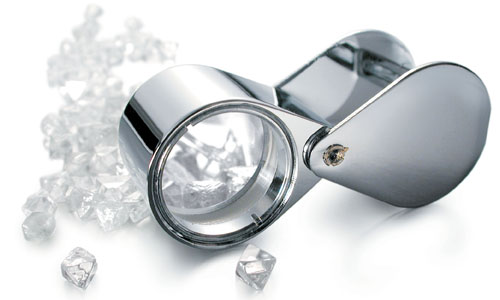
How Should A Good Appraisal Be Prepared
A appraisal shouldl be performed according to
the Uniform Standards of Professional Appraisal Practice and those of the
American Society of Appraisers.
Each piece of jewelry should be weighed, measured, and described
in detail.
Gemstones should be identified, graded, measured, and their
weights calculated
Metal content should be determined.
All diamonds over ½ carat should be issued a stone certificate,
with color, clarity and cutting angles listed. The internal characteristics of
the stone should be diagramed.
Colored gemstones certificates should be done for colored stones
when appropriate.
Your appraisal should have enlarged color photos of the items.
Photomicrographs (photos through the microscope) should be available
if needed for insurance claims, etc.
Your appraisal should explain the grading systems used.
An explanation of the definition of value should be included,
along with the instructions for the appropriate use of the appraisal
document.
Why Appraise Your Jewelry, Diamonds, Gemstones & Watches?
One of the first questions an appraiser may ask you is, "Why do you need this
appraisal"? This may seem like a nosey question to people who are unfamiliar
with appraisal practice, but it is in fact an indication that you may be
speaking with a trained professional appraiser.
Each jewelry appraisal must identify the specific intended
use.
There are many reasons for having your jewelry appraised and the value of
your personal property is different in each of a variety of situations. Some
appraisals have definitions of value dictated by law. With others the appraiser
chooses the appropriate type of value and appraisal method for the situation.
However, assessing the value of your jewelry is only one of the appraiser's
jobs.
The appraiser has three functions, and all of them are important to you.
Identifier. Your jewelry must be identified as to the
materials, workmanship, condition and any other elements affecting its value. It
is then evaluated, i.e., ranked in quality in relation to all other similar
property.
Valuer. A value must be assigned to the jewelry that is
appropriate to the intended use of the appraisal.
Reasons for obtaining a Jewelry Appraisal
Genuine Gemstones, Diamonds & Metals Identification
"I just want to know if it's real." "I have no idea what it is". Appraisal can authenticate your if gemstone is genuine or fake, diamond is natural or a immitation, gold and platinum are real or filled/plated. As an independent jewelry appraiser, opposed to a jeweler, can give you an unbiased assessment of what you have. This service is perfect for those who:
- Are making purchases from an unknown source;
- Are making purchases from non-traditional jewelry-selling parties;
- Are looking for peace of mind;
- Have something inherited and don't know if it's real, imitation, synthetic, or a look-alike.
Purchase/Sale Related Reasons
Quality Confirmation (Does my diamond match the certificate it came with?)
Purchase Price Evaluation (Did I pay a fair price?)
Sale Price Evaluation (How much can I get for this jewelry?)
To confirm certification and valuation from internet and cruise ship
purchases (Did I get what I paid for?)
Insurance Related Reasons
Insurance Scheduling
Insurance Claims (Post Loss Appraisal)
Damage Report (Evaluation for level of damage, repair, or
replacement)

Why Should You Get a "Good"
Appraisal
The end result of every appraisal must be to come to logical, supported
result. You can't just use the most convenient appraiser. Its like looking for a
doctor to do important surgery. You must try to find the best one available.
With medicine, it may be your life. With jewelry and diamonds, it is definitely
your wallet.
Appraisers discover and disclose inherent vice. Insurance companies may
choose not to cover your loss if they feel there was some weakness in the
gemstone that was there all along. This is what they call "inherent vice'. We
search for these problems and advise you, in advance, of damage. Then you can
make an informed decision about purchasing the gem.
We have years of experience dealing with consumer's needs and insurance
company requirements. We will supply you the required materials as a matter of
course.
A good appraisal will give you an adequate description to replace missing
elements when you have a partial loss. One line appraisals just can't provide
enough detail to describe side stones or mounting details. We do.
Whether you require a fair division of your assets due to divorce or estate
settlement reasons, or an appraisal for insurance, verifying a potential local
or Internet purchase, you need reliable and credible documentation to make the
situation finalized in the least costly and fairest way. We won't take sides and
refuse work where clients or vendors feel the need to pressure us into an
advocacy position.
How do I select a jewelry appraiser?
Under current law, no licensing or particular qualifications are required by the government for jewelry appraisers. There are many titles, some of which require extensive training, and others with few if any requirements. Always ask what testing and training the appraiser has undergone to achieve the title. Titles and qualifications to look for are:
Accredited Senior Appraiser (ASA) of the American Society of Appraisers. Their advanced designation in Gems and Jewelry is Master Gemologist Appraiser®.
The jewelry appraiser should also be a Graduate Gemologist (GG) of the Gemological Institute of America (GIA), or an FGA of the Gemological Institute of Great Britain. A gemological degree grants assurance that the individual can identify and grade gem materials. However, it does not by itself provide the training necessary to be a proficient jewelry appraiser.
Ideally, the appraiser should also have a background in the jewelry market.
Be sure that the appraiser has a GIA graded Master Set of genuine diamonds for color grading. A CZ set is not adequate!
Frequently Asked Question: Why You Need Jewelry Appraisal Services?
1. Why do I need current appraisals for my jewelry?
Appraisal is need for jewelry quality and price verification for insurance purposes. Over the years,
the value of your jewelry and gemstones can fluctuate greatly. If your last
appraisal is over two years old it may be out-of-date and, as a result, your
jewelry could be insured for less than its replacement value. That means you
risk a substantial financial loss if your jewelry is lost, stolen or
damaged. For your protection, we recommend you have your jewelry appraised
every two years. Appraisal shouldl provide you with accurate appraisal reports based on
current market values so you can obtain adequate insurance coverage. You may
also want to determine the value or authenticity of your jewelry for estate and
tax purposes, divorce settlements, donations and loans.
2. I already have an appraisal from the store where my jewelry was
purchased. Why do I need another appraisal?
Though some merchants may offer you free appraisals with your purchases, it
is advisable to have a "second opinion" to confirm the value of your jewelry. An
independent appraiser will take the time necessary to write an accurate,
in-depth appraisal that will help you avoid paying excessive premiums or
underinsuring your jewelry
3. I have homeowner's insurance. If I my jewelry is stolen or lost will I
automatically covered?
You are not covered for loss or damage unless you have your jewelry appraised
and scheduled separately. An appraisal will carefully document and photograph your
jewelry piece-by-piece so you can have it properly scheduled.
4. What is included in a jewelry appraisal?
Each appraisal should include complete laboratory testing of your jewelry and
an appraisal report for your records. The report contains such information as 1)
the content and weight of precious metals; 2) a detailed description of diamonds
and gemstones (carat weight, cut, clarity, color, measurements, proportion and
finish); 3) an internal diagram showing any inclusions (natural marks) in
diamonds; 4) a color photograph; and 5) the appraised value of your jewelry.
5. How can I be sure my appraisal is accurate?
All laboratory tests should be performed by G.I.A. Graduate Gemologists using the
industry's most precise scientific instrumentation. Appraisals are based on
current market values derived from a computerized networking system that
constantly monitors prices through the industry and compares retail prices.
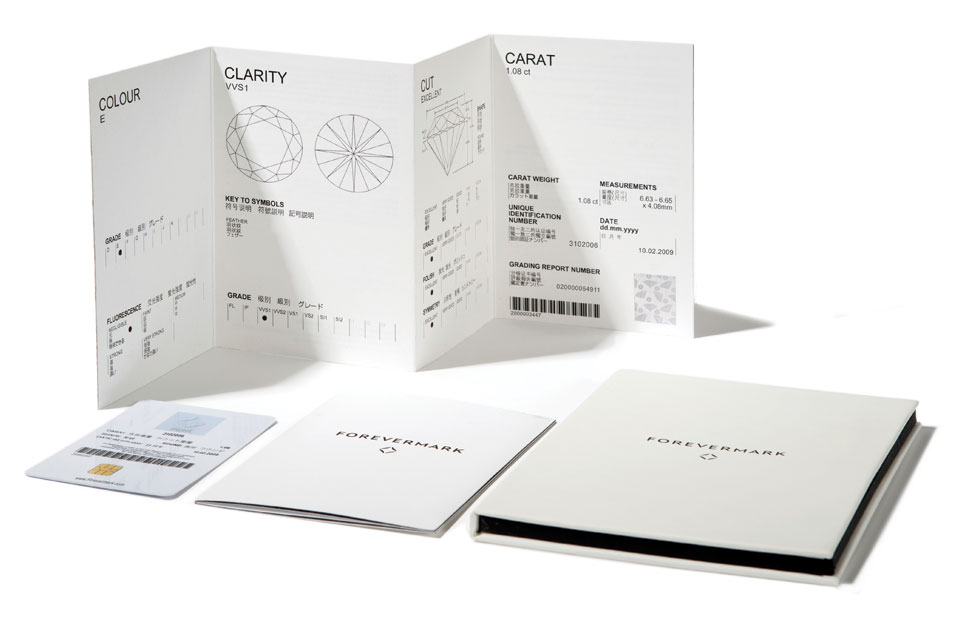
6. Do I have to leave my jewelry with an appraiser have it
appraised?
Appraisers will gladly appraise your jewelry while you watch with an appointment.
Your jewelry need not leave your sight. We also respect your privacy; all
appraisals are strictly confidential.
7. Do my diamonds have to be removed for an appraisal?
Diamonds and other gemstones do not have to be removed from their settings
during an appraisal. All lab tests are perfectly safe and will not damage or
alter your jewelry in any way.
8. How much should I expect to pay for an appraisal?
There should be a flat fee per item for each appraisal . This fee is based only on
the time needed to perform the tests and calculations. Fees are in no way
determined by the value of the jewelry.
9. How & What Do I Receive with an Appraisal?
A PDF electronic version is the greenest and most suitable document for insurance and third party use. It is certified with Master Gemologist Appraiser® seal and includes a digital signature. If paper versions are requested, they should be easily available. Reports include detailed descriptions with images and major components are listed separately with their grades and conditions and separate values. The final appraisal should contain all the references & credentials along with all relevant information pertaining to the purpose of the appraisal, the methods employed, the equipment used & certifications.
10. When Will I Receive My Appraisal?
Most single appraisals can be completed while you watch. Certain items can take a little longer though as they require more research. When this is the case an email version will be sent immediately upon completion with the hard copies if required.
11. How Often Do I Need To Update My Appraisal?
Sometimes, market conditions change markedly in just one year and other times it can take 5 years for market fluctuations. If you pay attention to the US dollar and inflation, you will have a better sense of when to call. You are welcome to contact us at anytime for a free analysis to update a previous value if necessary. We may also contact you should a significant market change make it very apparent to us that your appraisal is out of date. All the data of your past appraisal is securely kept on file to make the reappraisal process quick & cost effective.
Helpful Jewelry Information About Diamonds
Learn the four
C's of diamonds
| Baguettes |
Small rectangular cut diamond used primarily for trim or accent. |
| Blemish |
A term used to describe an imperfection on the surface of a finished
diamond, such as a scratch or cavity. |
| Blue Diamond |
A diamond with a distinct blue body color, usually a light blue. |
| Blue White |
A term used to describe a colorless diamond. The FTC ruled that the stone
must have a bluish tint. Flagrant misuse has made the term meaningless. |
| Body Color |
The color of a diamond as seen in diffused light against a neutral
background, free from surrounding reflections. |
| Brilliance |
The intensity of the white light reflected from the surface and the internal
surfaces of the facets on a diamond in the "Face Up" position. |
| Brilliant Cut |
Diamonds fashioned in the round shape with 58 facets. It is the most
efficient cut for diamonds cut from octahedral rough. |
| Canary Diamond |
Trade name for a yellow diamond with very intense yellow/green or
yellow/orange color. |
| Cape |
Trade name for diamonds showing distinct yellow tint as seen "Face Up". |
| Carat Weight |
Unit of weight for diamonds and other precious stones. A Metric Carat
= .200grams = 100 points. |
| Carbon Spots |
Black appearing spots in diamonds when seen at certain angles. Wrong term
for dark inclusions. |
| Cavity |
A hole or indentation on the surface of a diamond. |
| Certificate |
A written report stating all quality factors of a diamond. Price is not
stated. |
| Champagne Diamond |
A trade term describing a light yellow diamond with green or brown overtone
but lacks the intensity to be a Fancy Color Diamond. |
| Chip |
#1. A small irregular piece of diamond.
#2. A small break on the surface
of a diamond usually extending into the crown or pavilion if located on the
girdle. It can also extend in any direction from a facet edge. |
| Clean |
Frequently misused term to describe a diamond with slight imperfections. Can
also be used to describe a diamond with internal imperfections. Use is
prohibited by the FTC unless the stone qualifies as "perfect" as described by
the Commission. |
| Cleavage |
Usually describes an internal crack or break in a diamond along a
cleavage plane. |
| Colorless |
A diamond with absolutely NO body color. Stone must be completely
transparent. |
| Commercially Perfect |
A term used to describe the clarity of a diamond and implies that the stone
is nearly perfect. (See FTC's definition) |
| Commercial White |
A misleading term used to imply that a stone is nearly white, but is
actually off color. see Colorless |
| Crack |
A cleavage fracture or fissure with an irregular path inside the stone,
usually breaks the surface of the stone. |
| Crown |
The portion of the diamond above the girdle. |
| Cubic Zirconia |
A man-made simulated diamond that is frequently mistaken for a diamond. It
does not occur in gem as quality natural stone. |
| Culet |
Small facet polished at the buttom of the diamond, parallel to the table.
Usually seen on Old Mine or Old European Cut diamonds. Helped to prevent damage
to the older cut stones. If it is too large, it appears as a "hole" in the
stone. |
| Dispersion |
The breaking up of white light into all the colors of the rainbow. |
| Emerald Cut |
Refers to a rectangular shaped diamond with long parallel facets on the
crown and the pavilion. The overall shape is eight sided. |
| Eye Clean |
A term used to describe a diamond that has no flaws visible to the unaided
eye of a diamond expert, usually misused. see FTC description of "FLAWLESS" |
| Facet |
A flat angular surface polished on the surface of a diamond. |
| Face Up |
A gemstone as seen with the viewer looking directly at the top of the
stone. |
| Feather |
An internal cleavage with the appearance of a feather. |
| Filled Diamond |
A diamond that had a transparent filler forced into cracks, cleavages or
crevices under heat and pressure in order to improve the appearance of the
stone. |
| Fire |
Flashes of the rainbow colors from a diamond caused by dispersion. |
| Fish Eye |
An exceedingly shallow diamond with a noticeable lack of brilliancy. The
girdle is usually reflected under the table edge. |
| Flaw |
A term used to describe any external or internal imperfection in a
diamond. |
| Flawless |
A term used to describe a diamond that is totally void in external or
internal flaws or blemishes of any kind, as seen by a trained eye with a 10X
magnifier, under ideal lighting conditions. FTC rules permit the use of the word
"FLAWLESS" without any reference to color or cut. |
| Fluorescence |
Blue, yellow or white glow as seen on a diamond when viewed in ultra-violet
light or strong sunlight. |
| Fracture |
see "Crack" |
| Full Cut |
A term used to describe diamonds with 58 facets. |
| Gem Color |
A term usually used to imply that a diamond is colorless, when in
fact,
the stone is average to good color. |
| Gemologist |
A person who has completed studies in DIAMONDS, COLORED STONES and GEM
IDENTIFICATION. He or she should have sufficient experience in the jewelry
business to properly apply these studies to appraisals. |
| Girdle |
The edge of a diamond or other precious stone. |
| Head |
The portion of the mounting that actually holds the diamond. |
| Heart Shape |
A diamond that is fashioned in the shape of a heart. |
| Inclusion |
A visible foreign substance or crystal inside a diamond. see
"Flaw" |
| Included Crystal |
An enclosed crystal of mineral or another diamond inside a
diamond. |
| Industrial Diamond |
A diamond used in drilling or cutting tools. Usually very heavily flawed and
thus not suitable for the gem trade. |
| Internally Flawless |
A term that describes diamonds that are completely free of all inclusions
but may have very minor surface blemishes, which could be removed by
repolishing. |
| Laser Drilled |
Drilling diamonds with laser beams in order to enhance the appearance of a
diamond by providing a means to allow a bleaching substance to turn a dark flaw
to white. |
| Loupe |
A small magnifying glass, either hand held or placed in the eye socket. A
10X loupe should be used to examine diamonds. |
| Loupe Clean |
Usually a misused term to describe a diamond as being free of flaws with
magnification. SEE "PERFECT" OR "FLAWLESS" |
| Make |
Refers to the proportions and finish of a polished diamond. |
| Marquise Cut |
A boat shaped diamond that is pointed at both ends. |
| Master Diamonds |
Diamonds certified for body color. They are used to determine the color of
other diamonds by comparing the unknown with the known color of the Master
Diamond. |
| Moissanite |
A man made diamond substitute frequently mistaken for diamond. It does not
occur as a natural stone. |
| Mounting / Setting |
A term that describes an article of jewelry that holds gemstones. |
| Natural |
A portion of the original surface of a rough diamond left on a cut and
polished diamond, usually found on the girdle. It can extend into the crown or
pavilion. |
| Nick |
Small chip or indentation on the surface of a diamond. Usually found on the
girdle. |
| Octahedron |
Most common form of rough diamonds. Try to picture a small pyramid one on
top of another, base to base for a general idea of this crystal structure. It is
the best shape of rough for cutting brilliant cut diamonds. |
| Old European Cut |
A diamond with a round girdle outline. It will usually have a high crown, a
small table, a deep pavilion and a large culet. |
| Old Mine Cut |
A diamond with a squarish girdle outline. It will usually have a high crown,
a small table, a deep pavilion and a large culet.. |
| Oval Cut |
Elliptical shaped diamond, both ends are rounded. It is a variation of the
brilliant cut. |
| Pavilion |
The portion of the diamond below the girdle. |
| Pear Shape |
A variation of the brilliant cut with one pointed end and one rounded
end. |
| Perfect |
FTC rules state that a diamond must be free from any and all imperfections
when examined by a trained expert with a 10X magnifier in ideal lighting
conditions. In addition, the stone must be absolutely colorless and conform to
ideal proportions. Such stones are extremely rare. |
| Perfect Cut |
A term used to describe a stone that has been cut to ideal proportions. Such
stones are relatively rare. The term is often confused with Perfect. |
| Pin Point |
A small rounded inclusion but not discernable as an included crystal at 10X
magnification. |
| Polish |
#1. The smoothness of a facet surface.
#2. The act of applying facets to
a diamond. |
| Polished Girdle |
Usually a girdle edge that has been finished to a high polish or a series of
small facets all around the edge of the stone. Most girdles have a gray waxy
appearance. |
| Princess Cut |
A nearly square or rectangular stone with brilliant faceting above and below
the girdle. |
| Proportions |
Describes the cutting quality relative to the Table Percentage, Depth
Percentage, Girdle Percentage, Crown and Pavilion angles and symmetry. |
| Radiant Cut |
Similar to the Princess Cut with additional brilliant faceting on the four
corners, thus giving the stone an eight-sided outline. |
| Reflection |
The rebounding of light rays from the facet surfaces on a diamond. |
| Refraction |
The bending of light rays when they enter or leave a diamond. |
| Scintillation |
That twinkling of reflected light when a diamond is moved, or the viewer
moves or the light source moves. |
| Shank |
Portion of a ring that encircles a finger. It holds the head, which in turn,
holds the diamond. |
| Simulated Diamond |
Any material made and cut to look like a diamond. These stones may be
natural or man-made but will not have any of the properties of a
diamond. |
| Single Cut |
A small round diamond, usually under 0.05 ct. with 17 facets. |
| Solitaire |
A ring set with a single diamond. |
| Spread |
Describes a diamond that has been cut with a thin crown and a large table in
order to retain extra weight. see Fish Eye |
| Symmetry |
The exactness in shaping a diamond and the placing of the facets on the
stone. |
| Synthetic Diamond |
A man-made diamond with all the physical and chemical properties of the
natural diamond. |
| Table |
The large octangular facet on top of the crown on a round diamond. |
| Tapered Baguette |
A modified baguette, narrower at one end. Usually used for trim and
accent. |
| Tiffany Mounting |
Usually refers to a solitaire mounting with a four or six prong head to hold
the diamond. The shank is usually quite simple and narrow. |
| Treated Diamond |
Any diamond that has been lasered, filled, coated or bombarded in a reactor
to change the color or improve the appearance of the stone. |
| Trillion |
A triangular shaped stone with slightly curved girdle edges cut
with brilliant faceting. |
| Yag |
A man-made material used in lasers that duplicates the atomic structure of
garnet. Its technical name is YTTRIUM ALUMINUM GARNET. Colorless YAG is used as
a simulant for diamond. It was replaced with Cubic Zirconia. |
| Zirconia |
A man-made simulated diamond that is frequently mistaken for diamond. It
does not occur as a natural stone in gem quality. |
Helpful Jewelry Information - Diamonds' Four C's
Color
Diamonds range in color from colorless to yellow. Even though most diamonds
appear colorless to the untrained eye, the majority of diamonds contain traces
of yellow or brown. The closer the stone is to colorless, the more valuable the
diamond.
Clarity
Most diamonds contain very tiny natural birthmarks known as inclusions.
However, the fewer and smaller the inclusions are, the less likely they will
interfere with the passage of light through the diamond, and the more beautiful
the diamond will be. Diamond is nature's material that is most capable of
producing a maximum amount of brilliance. A diamond that is free of both
inclusions and surface blemishes is very rare and therefore more valuable.
Carat Weight
This is the weight of the diamond measured in carats. One carat is divided
into 100 'points', so that a diamond of 75 points weighs 0.75 carats. Carat
weight is the easiest of the 4 C's to determine. But two diamonds of equal
weight can have very unequal value, depending on their cut, color and
clarity.
Cut
Diamond cutting techniques have been refined since the fifteenth century when
master craftsmen passed down their art form from generation to generation.
Today, the finest diamond cutting still occurs in the hands of a skilled
craftsman. Cut determines the fire and brilliance of the diamond. If the diamond
is cut with just the right proportions and at certain precise angles, the
stone's ability to reflect and refract light will be maximized. When a round
diamond is cut to ideal proportions, light will bounce freely within the
diamond, and reflect back out of the crown without escaping through the opposite
side or the bottom of the stone. The skill and experience of the diamond cutter
will determine the stone's brilliance and scintillation.
Helpful Jewelry Information About Platinum
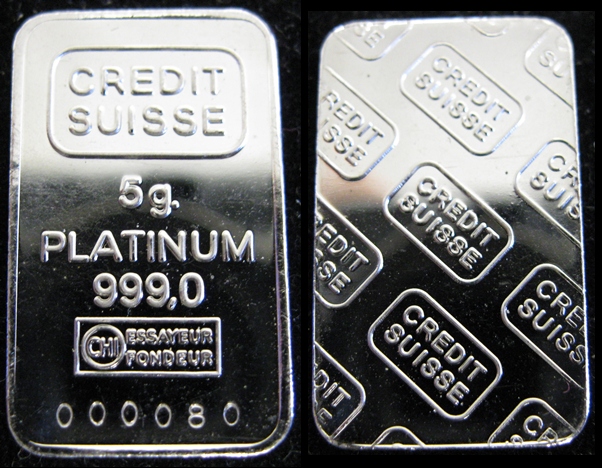
| The world's most precious metal |
For its beauty and value, platinum has always been the ultimate
expression of celebrations of all kinds: from weddings and anniversaries, to
birthdays, holidays and other special occasions.
One of the rarest precious metals on earth, platinum is found in only a few
locations in the world.
Platinum has a rich and noble history. It was first used by the ancient
Egyptians about three thousand years ago. Eight hundred years later, the South
American Incas worked with platinum. The first platinum jewelry in Europe
appeared around the year 1780, at the court of Louis XVI of France.
It may surprise you that, although platinum has been around for centuries, it
has only been used to fashion jewelry for less than two centuries. It is both an
ancient and a young metal.
|
| |
|
| Why platinum? |
Platinum is among the finest, purest and rarest precious metals
on earth, and has an understated elegance that appeals to both men and women.
Platinum is strong. Platinum, one of the strongest and most
enduring metals in the world, is also one of the heaviest: it weighs 60% more
than karat gold. It is ideal for jewelry worn every day because it exhibits
little material loss, even after prolonged wear.
Platinum is pure. In the U.S., platinum jewelry generally
contains 90% or 95% pure platinum. By comparison, 18 karat gold is 75% pure gold
and 14 karat gold is 58% pure gold. Platinum is hypoallergenic and resists
tarnish.
Platinum is rare. To produce a single ounce of platinum, a
total of 10 tons of ore must be mined. In comparison, only three tons of ore are
required to produce one ounce of gold. Rarity lends platinum its cachet.
Platinum is lustrous. Platinum's rich white luster perfectly
complements diamonds and other precious gems. Its neutral color enhances a
stone's brilliance and depth.
Platinum is fashionable. Platinum jewelry appeals to many
people today because of its subtle beauty and elegant understatement. Many
platinum jewelry designs are accented with 18 karat gold, creating a
sophisticated, versatile and fashionable look.
|
| |
|
| Platinum jewelry |
Many jewelry designers and manufacturers feel that platinum is
best suited for both diamond and colored stone jewelry because of its strength
and durability. Platinum prongs show little wear, and thus offer precious stones
greater protection.
Platinum is also one of the most enduring jewelry metals. That's why the
world's most famous diamonds, like the Hope, Jonker Diamond Number One, and the
Koh-i-Noor, are all secured by platinum settings. Faberg, the famed nineteenth
century Russian jeweler, prized platinum, as did Louis Cartier of Paris and many
of the great jewelers throughout history.
Choosing a stone is only part of the jewelry-buying process. The setting is
just as important, and platinum jewelry offers unusual strength and durability.
Fine platinum jewelry endures. Classic design outlives the whims of fashion and
retains its character forever.
|
| |
|
| Platinum & weddings... the perfect
marriage |
As platinum's pure white luster, strength and durability are
recognized and admired. Bridal couples worldwide are rediscovering platinum as
the metal of choice for bridal jewelry.
A diamond and its setting should be forever. Because platinum is superior to
other metals in strength and durability, it offers a diamond greater protection.
The breathtaking radiance of a diamond fused with the timeless elegance of
platinum creates a rare and enduring symbol of lifelong love.
|
| |
|
| Buying platinum jewelry |
Whether you are choosing a ring, pin, bracelet, necklace or
bridal jewelry, new and sophisticated designs have created a wide range of
platinum jewelry. Many current platinum designs feature 18-karat gold accents.
This combination of metals enhances the unique qualities of each.
In the U.S., platinum jewelry usually contains 90% or 95% pure platinum. If a
piece of platinum jewelry is marked "iridplat," then it generally contains 90%
platinum and 10% iridium, a platinum group metal. If it is marked "plat," then
it is at least 95% platinum and another platinum group metal, most likely
ruthenium.
Owning a piece of platinum jewelry is a distinct pleasure. You can feel and
see the difference; platinum is heavier and denser than other metals and it has
an elegant, rich white luster. Buying platinum jewelry is a wise investment.
Platinum is one of the rarest, purest and most enduring metals available.
An experienced jeweler can assist you in selecting platinum jewelry that will
bring pleasure to you and the recipient for years to come.
|
| |
|
| Your questions about platinum
jewelry |
Why is platinum's purity important to me? Platinum is
hypoallergenic, resists tarnish, is one of the strongest precious metals in the
world and is extremely durable.
Is platinum the same as white gold? No, it is quite
different. During World War II, the U.S. government prohibited platinum's use in
all non-military applications, including jewelry. Because of strong consumer
preference for platinum's pure white luster, white gold was substituted in
platinum's absence. To create white gold, yellow gold is alloyed with nickel and
zinc (and small amounts of copper and silver), thereby achieving a white metal
look. Platinum has purity, strength, rarity, durability, and a natural rich,
white color.
How should I care for and clean my platinum jewelry?
Platinum jewelry should be cleaned the same way you clean other fine jewelry.
Use a good pre-packaged jewelry cleaner available from your local jeweler or
have it professionally cleaned by your jeweler. As with all precious jewelry,
store with care, not allowing pieces to touch or scratch each other.
Will platinum scratch? Signs of wear, including scratches,
will inevitably appear in all precious metals, even with platinum. Due to
platinum's amazing durability and strength, however, there is little or no
material loss when it is scratched.
Is platinum fashionable? How will it coordinate with my gold
jewelry? Yes, platinum is fashionable! It is very fashionable to wear platinum
jewelry with your other fine gold jewelry. Platinum jewelry often contains karat
gold design accents, just as karat gold jewelry is sometimes accented with
platinum. Platinum's white color beautifully contrasts with yellow gold and adds
versatility to your existing jewelry wardrobe.
Is platinum a good value? Yes! Platinum is an excellent
value because of its inherent qualities: its purity, its strength, its
durability and its rarity. When you purchase platinum jewelry, you are buying
jewelry that is almost 100% pure. In the U.S., platinum jewelry is generally 90%
or 95% pure platinum, with 5% or 10% alloy of a platinum group metal. By
comparison,18 karat gold is 75% pure gold and 14 karat gold is 58% pure gold.
No other precious metal is as pure or bears all the qualities of platinum.
Worn over a lifetime and passed on to future generations, platinum is the
jewelry metal of choice.
|
Helpful Jewelry Information About Gold
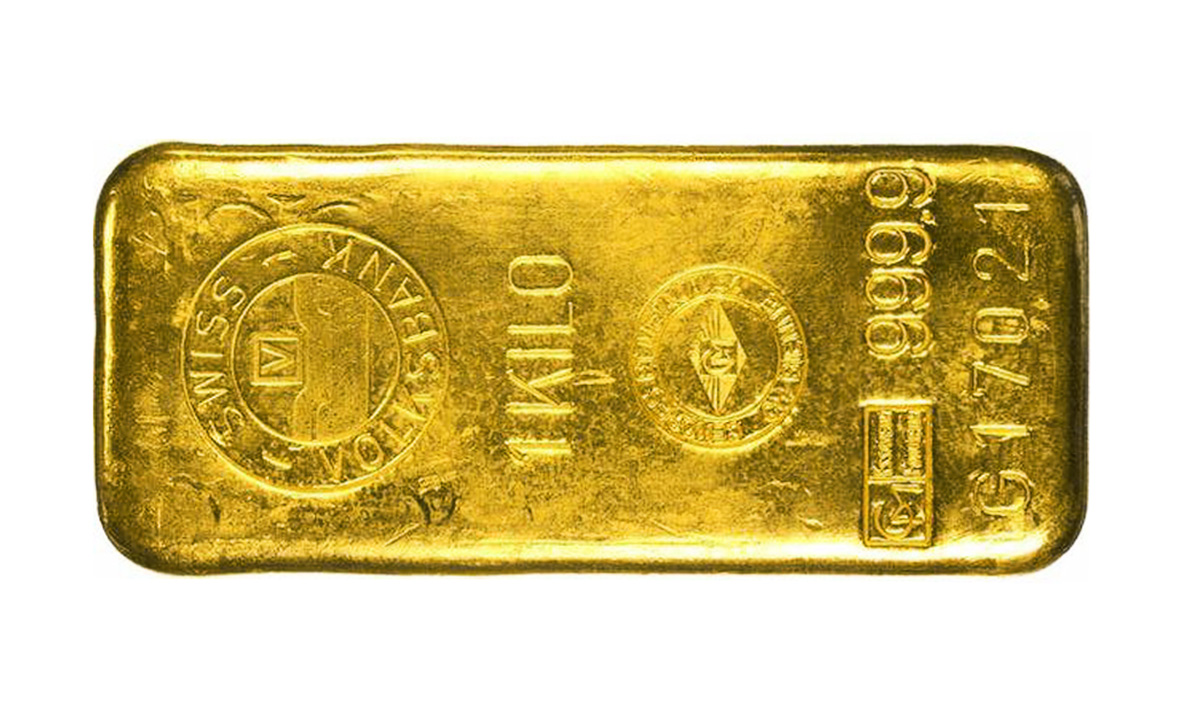
| The allure of gold |
The allure of gold, and the desire to own it, dates back as far as the
history of mankind itself.
The place of gold has been extraordinary in every society. In earliest times,
it had magical importance. All of the great empires of the ancient world used
golden objects, mainly in their religious rituals.
Over centuries of growing sophistication and technology, gold has taken on
many additional roles. Not only is it still prized for jewelry, it now has many
new applications in contemporary life.
Gold soared into space with the astronauts, its reflective ability is used on
the heat shields that are critical to life. This same ability to reflect the sun
increases the aesthetic and practical beauty of today's glass skyscrapers; gold
in tinted windows makes the difference between obstructive glare and glamorous
gleam.
In medicine and dentistry, in industry and in a hundred applications from TV
sets to telephones, computers to calculators, this eternal metal is an important
component.
But, above all, gold has enjoyed its finest glitter throughout the ages in
its ultimate form - jewelry. In fact, the wearing of gold on the body may
actually be man's oldest surviving tradition.
Every day, virtually each one of us continues the centuries-old ritual of
gold adornment. Men, women and children of all cultures are caught up in gold's
allure through a ring, chain, earrings, watch or bracelet.
|
| |
|
| The uniqueness of gold |
Of all the world's precious metals, only gold combines the four basic
characteristics that make it a universally and eternally treasured possession:
Lustrous Beauty - The naturally intense color and
distinctive luster of gold combined to give this precious metal its unique and
lasting beauty. Gold's natural beauty is further enhanced by the soft and
exquisite shades of color achieved by combining it with small amounts of other
special metals.
Yellow, pink, green and white golds - each exquisite in its
own right. There is always fashion acceptance of all colors and color
combinations of gold. One of today's trends features combining colors of gold -
yellow, white and pink - in jewelry.
Rarity - Although gold is everywhere around us - in the
earth's crust, in our seas, rivers and plants - the difficulty and expense of
obtaining gold from these diverse sources makes recovery of any great amounts
unlikely.
First of all, any new gold mine represents a capital investment of hundreds
of millions of dollars! Then, where gold is found to exist, several tons of ore
may be required in order to extract just one ounce of the precious metal.
This rarity alone is enough to bestow a certain symbolism of status to gold.
Now, combined with its other inherent characteristics, this lustrous and
beautiful metal becomes an even more desirable possession.
Durability - Gold lasts, and lasts. Since it does not rust,
tarnish or corrode, gold virtually lasts forever. An example of this incredible
durability is witnessed in the gold coins found in sunken galleons centuries-old
- they're as bright and shiny as the day they were cast! Another familiar
example has overwhelmed the millions of people who have seen the Treasures of
King Tut. When the boy King Tutankhamum died in 1350 B.C., he was buried with
vast quantities of gold artifacts and jewelry. Today, more than 3,000 years
later, viewers marvel at the breathtaking golden array, as gleaming and lustrous
today as on the day it was buried with the young king.
Today, when you buy gold jewelry, you are buying enduring beauty. Reflecting
the properties of the precious metal itself, a gift of gold has always been the
symbol of lasting love and devotion.
Ease of Workability - Gold has the best working qualities of
any metal, thereby making it the ideal precious metal for fine jewelry whose
designs are meant to reflect and appeal to so many different personalities.
To give you an idea of its workability, gold is so soft and malleable, one
ounce can be stretched into a wire an incredible 50 miles long or hammered into
a sheet so thin, it covers 100 square feet!
It is gold's workability that enables it to be alloyed with the other special
precious metals to produce special effects or to achieve variations of
color.
Gold can be re-melted and used again and again. And, gold works for everyone.
From the most intricate baby bracelet to the heaviest man's chain, gold's
workability gives it the ability to achieve the look and the feeling of
importance.
|
| |
|
| How do you know it's real gold? |
All that glitters isn't gold! When buying gold jewelry, always look for a
karat mark, such as 18K, 14K, 10K, etc. plus the manufacturer's trademark.
Stamped somewhere on each piece, this mark of quality indicates you are buying
real gold.
The karat mark refers to the purity of gold. Gold in its purest state, 24
karat, is generally considered too soft for practical use in jewelry.
It must be alloyed with other special metals to increase its durability and
workability.
Twenty-four karat is 100% pure gold, or 24 parts gold; 18K is 18 parts gold
and 6 parts other metal; 14K is 14 parts gold and 10 parts other metal; and, 10K
is 10 parts gold and 14 parts other metal.
Nothing less than 10K can legally be marked or sold as gold jewelry in the
United States. Alloys of less than 10 karat gold cannot be stamped with the
karat mark and are not considered real gold. For example, some jewelry is
processed with a layer of gold which has been mechanically bonded to a base
metal. This jewelry cannot have a karat mark unless it is qualified. In other
words it must be marked "gold filled" preceded by the karat fineness; e.g. "14K
gold filled."
Summing up, with gold an ever more precious and fashionable metal, the karat
mark on a piece of jewelry is becoming increasingly significant. Only karat gold
jewelry is real gold, offering the lasting characteristics of this precious
metal.
|
| |
|
| Where to buy gold jewelry |
When you buy gold jewelry, whether it's for yourself or a gift for a loved
one, you are investing in timeless beauty.
For such an important purchase, you want to be sure to make the selection
that best suits your needs. Your jeweler can answer any questions you may have,
and offer you the widest selection of gold jewelry. With his experience, he can
help you find that piece of gold jewelry that can be cherished for a lifetime
and even become a family heirloom.
Rely on your a reputable jeweler. He or she is an
expert.
|
Tools, Instruments, Equipment & Software Used by Gemologists in Preparing Appraisals
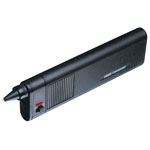 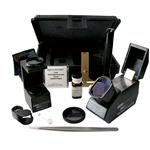 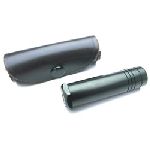
Gemological Microscope
Carat Scale
Scale
Hand Held & Eye
Loupe
Hearts & Arrows Viewer
Ideal Scope
Long & Short Wave
Ultraviolet Lamp with Dark Box
Refractometer
Hand-Held
Spectroscope
Challenger Desktop Spectroscope
OGI Megascope with PAS
Integration
Gran Colorimeter
Grading Lamp & Daylight Equivalent
Overhead Lighting
Polariscope
Heavy Liquids
Hydro-Static
Attachments
Chelsea Color Filter
Dicroscope
Master Diamond
Set
Master CZ Set
Metal Testing Acids
Electronic Metal
Tester
Electronic Diamond Tester
GEM Diamond Proportion Analyzer
Steam
Cleaner
Ultrasonic Cleaner
Gemdialogue
PAS - Professional Appraisal
Software
Diamond Calc
Gemology Tools Pro
GIA/GemE Square with PAS
Integration
The Smart Chart for Opals with PAS Integration
The
Guide
Digital & Dial Guage
Table Guage
Digital Caliper
Pearl
Dial Guage
Poema Pacific Pearl Colors
GIA GemSet
What Can Be Appraised?
|
Quality/Value
Verification
|
|
Diamonds
|
|
Opals
|
|
Sapphires
& Rubies
|
|
Cats Eye
& Chrysoberyls
|
|
Pearls
|
|
Fine
Watches
|
|
Jade
& Ivory
|
|
Antique
& Vintage Jewelry
|
|
Vintage
Costume Jewelry
|
|
Flatware
& Holloware
|
|
Coins
& Paper Money
|
|
Decorative Objects
|
|
Autographs
|
|
Antiquities
|
|
Fine
Art
|
|
Sports
Memorabilia
|
Market News
http://www.idexonline.com/ - Market news & pricing
information.
http://www.diamonds.net/ - News & information for industry
insiders & consumers alike.
Professional & Informational Links - These are
links to professional appraisal or gemological organizations, and to sites
offering relevant information to consumers of jewelry or jewelry appraisal
services.
ASA
- The American Society of Appraisers
Jewelry
Appraisers - Links to several of my colleagues (organized by
state).
Appraisal Foundation - The Appraisal Foundation, a
not-for-profit educational organization dedicated to the advancement of
professional valuation
The Master Valuer
Program - I teach courses in this program
GIA Facetware - Input the parameters of a round diamond and get a prediction of the GIA cut grade.
Holloway Cut Advisor
- See how your round diamond cut scores.
AGAs (Old) Cut Grading Tool - Diamond cut grading tool for a variety of shapes.
Russian Gemological Server - Articles on diamond cut research from the basics to some high tech information.
NAJA - The
National Association of Jewelry Appraisers
USPAP - Uniform Standards of Professional
Appraisal Practice developed by the Appraisal Foundation
AGA
- Accredited Gemologists Association
FTC
Guides - Federal Trade Commission Guides for the Jewelry, Precious
Metals, and Pewter Industries
GIA - The Gemological Institute of America
AGS - American Gem
Society Laboratories
GIA Alumni Golden
Gate Chapter - San Francisco Bay Area chapter of the GIA Alumni
Association
Pricescope - Foremost online resource for the consumer with searchable diamond listings and informative forums.
All About Jewels / Glossary - Jewelry & gemstone names & terms with images & explanations.
Diamond Review - Providing guidance and resources for diamond jewelry consumers.
Pricescope - A
great consumer information resource for diamond buyers. Take a diamond tutorial.
Use the search engine to find diamonds all over the Internet and compare
prices. Use the forum to ask questions or share information with other diamond
buyers.
Diamonds.Net - Presented by Rapaport Information
Services, Publishers of The Rapaport Diamond Report (A great collection of
jewelry links)
Quantum Leap
Software Solutions - Professional Appraisal Software for the Jewelry
Industry
Is Your Jewelry At Risk? - Good advice about selecting an
appraiser & insuring your jewelry
How to Select Gemstones - Presented by GemData
How to Recognize a Good Jewelry Appraisal - Information
from the Jewelry Insurance Standards Organization
How to Enter the Appraisal Profession - Information from
the Appraisal Foundation (PDF File)
Understanding Carat (or Karat) Purity of Metals -
Wikipedia explanation
How to Buy a Gemstone - Fun Brochure from the GIA
(Gemological Institute of America)
How the GIA Grades Diamonds - A video from the GIA on the
"4 C's" of diamond grading
American Gem Society Podcasts - Podcasts on various
gem-related subjects from AGS
All
About Jewels Glossary - An illustrated dictionary of jewelry terms
World Gold Council -
Everything you might want to know about Gold
Diamond Grading
Tools - Sarin is a worldwide leader in the development of Diamond
Grading systems, Gemology Tools and rough diamond optimization systems
Advice on Buying Diamonds - My good friend, Jonathan Siegel,
has some good advice about buying diamonds on his website. You can see it at http://www.diamondringsofhouston.com/understanding-diamonds-jewelry.html.
Gold Buying Scams - You see a lot of advertisements for firms offering
to buy your unwanted gold these days. Some are real rip-offs. Here is an article
you should read before sending off your gold. http://consumerist.com/5349663/?EXTKEY=NW0S00910
Cruise Jewelry - Planning a vacation to an exotic
resort—sunny beaches, lazy days, romantic nights and . . . jewelry store after
jewelry store selling bargain “duty free” glitter? You might want to do a little
searching on Ripoff Report at http://www.ripoffreport.com/default.asp Search on your
destination plus “jewelry”, or search on “Cruise Jewelry”.
Also, fill out a Fraud Report for the Accredited
Gemologists Association, which you can access at http://www.accreditedgemologists.org/ccq/index.php. These
complaints are being collected for future use by the appropriate Attorney
General or in a possible class action lawsuit.
Buying Gemstones? - Check out
the article at the link below.
http://www.faceters.com/askjeff/answer118.shtml
Lead Glass-Filled Ruby - There is a lot of this on the
market today. It is cheap & may be tempting but know what you are getting. See the article at http://www.multibriefs.com/briefs/agta/RubyLetter112409.htm.
Tanzanite Scams - In love with Tanzanite? Beware of a new,
hard-to-detect treatment where a thin film of artificial color is applied to the
pavilion (bottom) of the stone, drastically improving the color. http://www.agta-gtc.org/coated-tanzanite.htm
Red Labradorite Scams - is brilliant red labradorite (Andesine) your
cup of tea? Follow the ongoing controversy of imported Andesine (as opposed to
Oregon Sunstone) at http://www.jckonline.com/blog/1950000195/post/1510022951.html
Green Amber Scams - Have you heard about the mysterious green amber?
The mystery of this new treatment solved here: http://www.agta-gtc.org/2008-03-04-seminar.htm#amber
Stolen Jewelry - The Jewelers' Security Alliance has a web page
listing information on stolen jewelry at http://www.stolenjewelry.org/
Shipping jewelry? Learn how to correctly package, insure and mail your
jewelry safely here: Packaging Jewelry for Registered Mail.
|

|
| |
|
|
|
|
Gemstone Education
|
|

|
|
|
Diamond Education
|
|
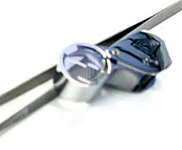
|
|
|
Jewelry Education
|
|
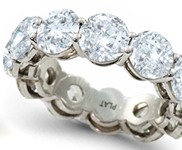
|
|
|
Metals Education
|
|
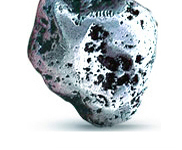
|
|
|
|
|
|
|
|
Settings Education
|
|
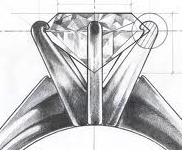
|
|
|
Designs Styles Education
|
|
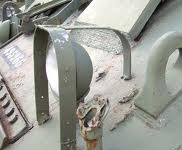
|
|
|
Ring Size Education
|
|
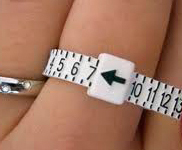
|
|
|
Certification Education
|
|
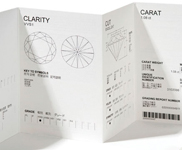
|
|
|
|
|
|
|
|
Authencity Education
|
|
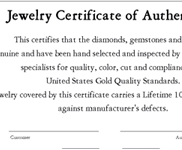
|
|
|
Genuine Gems Education
|
|

|
|
|
Buying Online Education
|
|

|
|
|
Jewelry Care Education
|
|
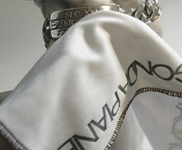
|
|
|
|
|
|
|
|
Gems Care Education
|
|
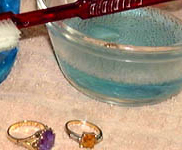
|
|
|
Company Info Education
|
|
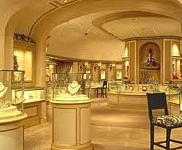
|
|
|
Sapphire Jewelry Advice
|
|
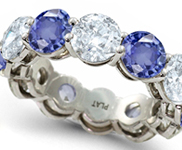
|
|
|
Emerald Jewelry Advice
|
|
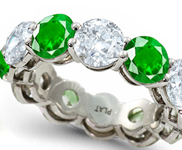
|
|
|
|
|
|
|
|
Ruby Jewelry Education
|
|
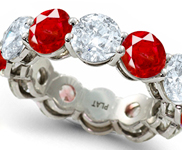
|
|
|
Antique Jewelry Advice
|
|
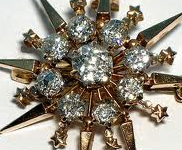
|
|
|
Gems Mining Education
|
|

|
|
|
Eco-Friendly Education
|
|
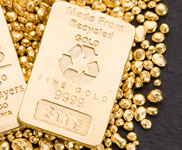
|
|
| Online Shopping Tips - How to Buy Authentic Jewelry, Genuine Gemstones, Natural Diamonds & Real Gold |
|
What is a Genuine Gemstone? Know All About Genuine Gemstones. Read More.
|
|
What is Authentic Jewelry? Know All About Authentic. Read More.
|
|
What is Certified Jewelry? Know All About Certified Jewelry. Read More.
|
|
What is Fine Designer Jewelry? Know All About Fine Jewelry. Read More.
|
|
Genuine Gemstones Identification? Know All About Fine Genuine Gemstones. Read More.
|
|
What is Real Gold, Platinum, Silver, Palladium or Fake Gold Filled, Gold Plated? Know All About Real Gold, Platinum, Silver, Palladium, Platinum, Silver, Palladium. Read More.
|
|
Jewelry Caring & Cleaning, Ruby Jewelry Caring & Cleaning, Sapphire Jewelry Caring & Cleaning, Emerald Jewelry Caring & Cleaning, Diamond Caring & Cleaning. Read More.
|
|
Genuine Diamond Testers, Genuine Gemstones Testers, Real Metal Testers, Authentic Jewelry Testers. ? Know All About Testers to Identify Natural Diamonds, Genuine Gemstones, Real Metals and Authentic Jewelry. Read More.
|
| Sndgems Jewelry Trade Affiliations, Read More and Conflict-Free Diamonds. Read More. |
| Celebrity News - Red Carpet, Oscars, Celebrity Jewelry. Read More. |
| Fine-Quality Burma Ruby, Ceylon Ruby, Kashmir Sapphire, Burma Sapphie, Columbian Emerald Guides. Read More. |
| Complete Online Shopping Guide to ensure safe shopping, getting quality value product with money back guarantee when shopping online for jewelry. Read More. |
|
Identification of Synthetic or Fake Emeralds from Genuine Emeralds Guidelines. Read More.
|
|
Identification of Synthetic or Fake Rubies and Sapphires from Genuine Rubies and Sapphires Guides. Read More.
|
| Identification of Ruby, Sapphire Sources - If they're from Burma, Ceylon or Thailand. Read More. |
| Identification of Emerald Sources - If they're from Columbia, Zambia, Brazil, Africa. Read More. |
| Gemstone Buying Guides - How to Evaluate, Identify & Select Genuine Gemstones of Good Quality. Read More. |
|
Gemology 101: Gemologists Identification & Valuation of Gemstones Diamonds. Read More.
|
|
Identification of Synthetic or Fake Imitation Diamonds from Genuine Diamonds Buying Guides. Read More.
|
|
Jewelry Appraisal Education Center - What's Your Jewelry Worth? Jewelry Appraisal, Diamond and Gemstone Appraisals Guidance. Authentic Jewelry: Certified Diamond & Genuine Gemstone Jewelry. Read More.
|
|
Learn about Diamond Ring Styles and Designs – Choose your Perfect Engagement Ring, Anniversary Ring or Wedding Ring. Learn More.
|
|
The Worlds Top Jewelry Stores, Online Shopping Guides. Read More.
|
| Complete Online Shopping Guide to ensure safe, secure online jewelry shopping. Read More. |
|
|